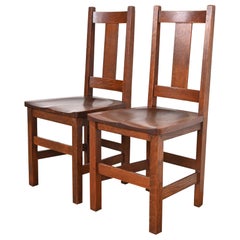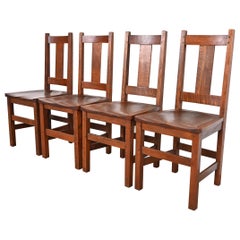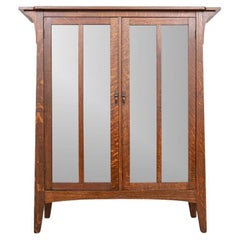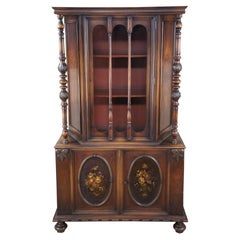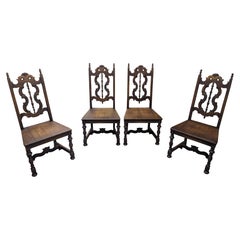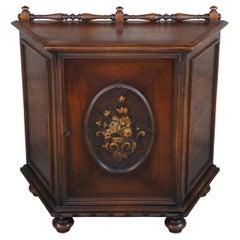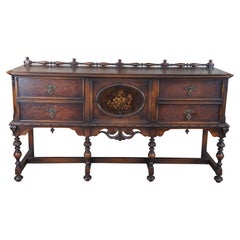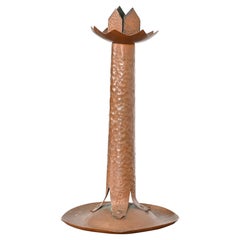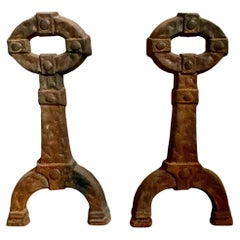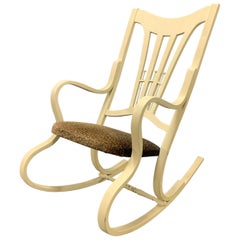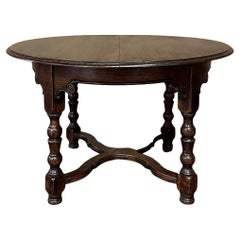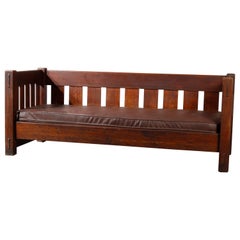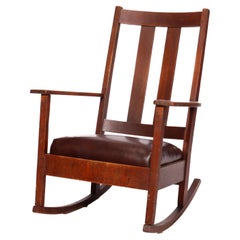Limbert Antique Furniture
Early 20th Century American Arts and Crafts Side Chairs
Oak
Early 20th Century American Arts and Crafts Dining Room Chairs
Oak
Early 20th Century American Arts and Crafts Bookcases
Glass, Oak
Early 20th Century Jacobean Cabinets
Walnut
Antique Late 19th Century Jacobean Dining Room Chairs
Walnut
Early 20th Century American Jacobean Buffets
Walnut, Paint
Early 20th Century Jacobean Sideboards
Walnut
Early 20th Century American Arts and Crafts Candlesticks
Copper
Early 20th Century Arts and Crafts Fireplace Tools and Chimney Pots
Iron
People Also Browsed
Antique Early 1900s Austrian Vienna Secession Rocking Chairs
Bentwood
Early 20th Century French Country Dining Room Tables
Oak
Antique 17th Century Italian Baroque Bookcases
Spruce
Early 20th Century American Arts and Crafts Pedestals
Oak
Early 20th Century Arts and Crafts Pedestals
Oak
Early 20th Century European Arts and Crafts Coat Racks and Stands
Metal, Brass
20th Century English Jacobean Dressers
Oak
Antique Early 1900s American Arts and Crafts Cigar Boxes and Humidors
Bronze
Early 20th Century American Arts and Crafts Rocking Chairs
Leather, Oak
Early 20th Century American Arts and Crafts Chandeliers and Pendants
Stained Glass
Vintage 1920s American Mission Stools
Oak
Vintage 1910s American Adirondack Table Lamps
Slag Glass, Oak
Early 20th Century American Arts and Crafts Desks and Writing Tables
Copper
Early 20th Century American Arts and Crafts Rocking Chairs
Leather, Oak
20th Century American Jacobean Commodes and Chests of Drawers
Chestnut, Oak
Early 20th Century American Arts and Crafts Desks and Writing Tables
Oak
Recent Sales
Early 20th Century American Arts and Crafts Sofas
Oak
Early 20th Century American Arts and Crafts Rocking Chairs
Oak
Vintage 1920s Arts and Crafts Rocking Chairs
Oak
Early 20th Century American Arts and Crafts Commodes and Chests of Drawers
Bronze
Early 20th Century American Arts and Crafts Coffee and Cocktail Tables
Oak
Early 20th Century American Arts and Crafts Shelves
Oak
Early 20th Century American Arts and Crafts Bookcases
Glass, Oak
Early 20th Century American Arts and Crafts Bookcases
Glass, Oak
Early 20th Century American Arts and Crafts Magazine Racks and Stands
Oak
Early 20th Century American Arts and Crafts Magazine Racks and Stands
Oak
Early 20th Century American Arts and Crafts Dining Room Tables
Oak
Early 20th Century American Arts and Crafts Cabinets
Metal
Early 20th Century American Arts and Crafts Magazine Racks and Stands
Oak
20th Century American Arts and Crafts Bookcases
Oak
Early 20th Century American Arts and Crafts Hat Racks and Stands
Oak
20th Century American Arts and Crafts Desks
Oak
Early 20th Century American Arts and Crafts Armchairs
Upholstery, Wood, Oak
Early 20th Century American Arts and Crafts Rocking Chairs
Oak
Antique Early 1900s American Arts and Crafts Benches
Copper
Early 20th Century American Arts and Crafts Settees
Oak
Early 20th Century American Arts and Crafts Chairs
Oak
Early 20th Century American Arts and Crafts Cabinets
Oak
Early 20th Century American Arts and Crafts Armchairs
Leather, Oak
Early 20th Century American Arts and Crafts Stools
Oak
20th Century Dining Room Chairs
Early 20th Century American Arts and Crafts Side Tables
Oak
Early 20th Century Jacobean Dining Room Tables
Walnut
20th Century American Arts and Crafts End Tables
Oak
Early 20th Century Jacobean Dining Room Chairs
Walnut
Early 20th Century American Arts and Crafts Dining Room Chairs
Oak
Early 20th Century American Arts and Crafts Candlesticks
Copper
Early 20th Century American Chinoiserie Buffets
Wood
Early 20th Century American Arts and Crafts Side Tables
Oak
Early 20th Century American Arts and Crafts Rocking Chairs
Oak
Early 20th Century American Arts and Crafts Benches
Wood, Oak
Antique Early 1900s American Mission Desks and Writing Tables
Oak
Early 20th Century American Arts and Crafts Desks and Writing Tables
Metal
Antique Early 1900s American Mission Dining Room Sets
Leather, Oak
Early 20th Century American Arts and Crafts Stools
Oak
Early 20th Century American Arts and Crafts Cabinets
Oak
20th Century American Arts and Crafts Bookcases
Oak
Early 20th Century American Arts and Crafts Desks
Oak
Early 20th Century American Arts and Crafts Desks
Oak
Early 20th Century Arts and Crafts Desks and Writing Tables
Oak
Vintage 1910s North American Arts and Crafts Chairs
Vintage 1910s North American Arts and Crafts Side Chairs
Vintage 1910s American Arts and Crafts Settees
Limbert Antique Furniture For Sale on 1stDibs
How Much is a Limbert Antique Furniture?
A Close Look at arts-and-crafts Furniture
Emerging in reaction to industrialization and mass production, the Arts and Crafts movement celebrated handcrafted design as a part of daily life. The history of Arts and Crafts furniture has roots in 1860s England with an emphasis on natural motifs and simple flourishes like mosaics and carvings. This work is characterized by plain construction that showcases the hand of the artisan.
The earliest American Arts and Crafts furniture dates back to the start of the 20th century. Designers working in this style in the United States initially looked to ideas put forth by The Craftsman, a magazine published by Wisconsin native Gustav Stickley, a furniture maker and founder of the Craftsman style. Stickley’s furniture was practical and largely free of ornament. His Craftsman style drew on French Art Nouveau as well as the work he encountered on his travels in England. There, the leading designers of the Arts and Crafts movement included William Morris, who revived historical techniques such as embroidery and printed fabrics in his furnishings, and Charles Voysey, whose minimal approach was in contrast to the ornamentation favored in the Victorian era.
American Arts and Crafts work would come to involve a range of influences unified by an elevation of traditional craftsmanship. The furniture was often built from sturdy woods like oak and mahogany while featuring details such as inlaid metal, tooled leather and ceramic tiles. The style in the United States was led by Stickley, whose clean-lined chairs and benches showcased the grain of the wood, and furniture maker Charles Rohlfs, who was informed by international influences like East Asian and French Art Nouveau design.
Hubs in America included several utopian communities such as Rose Valley in Pennsylvania and the Byrdcliffe Arts and Crafts Colony in New York, where craftspeople made furniture that prioritized function over any decoration. Their work would influence designers and architects including Frank Lloyd Wright, who built some of the most elegant and iconic structures in the United States and likewise embraced a thoughtful use of materials in his furniture.
Find antique Arts and Crafts chairs, tables, cabinets and other authentic period furniture on 1stDibs.
- What is Limbert furniture?1 Answer1stDibs ExpertMarch 3, 2023The term Limbert furniture refers to pieces produced by Charles P. Limbert Furniture Co. from 1894 to 1944. The company produced furniture in Holland and Grand Rapids, Michigan. Founder Charles P. Limbert frequently designed pieces in the Arts & Crafts style. Shop a collection of Limbert furniture on 1stDibs.
- 1stDibs ExpertMay 5, 2023To identify Limbert furniture, search for the label. Limbert marked their pieces with a white paper label that showed off blue lettering. In the center of the label, there will be an image of a craftsman working at a wood bench. Pieces dating back to the early 20th century will say "Arts and Crafts" on them, while furnishings from the mid-1920s bear the words "Limber Furniture by Van Raalte Craftsmen Grand Rapids and Holland, Michigan." If you need assistance, a certified appraiser can evaluate the piece and determine whether it is an authentic Limbert. On 1stDibs, shop a range of authentic Limbert furniture.
- 1stDibs ExpertMarch 31, 2023Limbert furniture was made in Grand Rapids and Holland, Michigan. Charles Limbert founded his eponymous furniture-making company in 1894 and began producing its famed Dutch Arts and Crafts line in 1902. On 1stDibs, shop a variety of Limbert furniture.
- What makes furniture an antique?1 Answer1stDibs ExpertAugust 15, 2019
A piece of furniture is considered an antique if it is at least 100 years old.
- Is antique furniture in style?1 Answer1stDibs ExpertApril 22, 2024Yes, antique furniture is in style. Many people appreciate the beauty and handcrafted character of antique furniture and love the idea of owning pieces with a rich history. Remember that style preferences are nothing if not fluid, meaning what's in one year may not be the next. So, in choosing the furniture you're planning to live with, you should pay less attention to interior design fads than to what speaks to you. That way, you can select pieces that will add long-term character to your home. On 1stDibs, find a large collection of antique furniture.
- 1stDibs ExpertApril 5, 2024To know if your furniture is antique, look for labels and markings that indicate the maker. From there, you can use trusted online resources to determine when they were active and examine images to try to estimate the age of your piece. Furniture produced 100 years ago or more is antique. You can also have your furniture assessed by an appraiser or antiques dealer to learn about its age. On 1stDibs, explore a large collection of antique furniture.
- 1stDibs ExpertFebruary 22, 2021Antique furniture can be worth quite a lot, particularly if it is in good quality. The rarer the piece, the higher the value.
- 1stDibs ExpertFebruary 22, 2021There are a number of factors that can indicate if your antique furniture is valuable. When determining the value of antique furniture, consider its rarity. Additionally, it is important to determine the quality and condition of vintage furniture. If unsure of the value of your vintage furniture, have it appraised.
- 1stDibs ExpertFebruary 1, 2024To date antique furniture from the UK, first look for identifying markings on the piece. You can then use trusted online resources to determine when the maker was active. From there, you may be able to estimate the year of production by looking at images of other furniture the maker produced. An expert appraiser or antiques dealer can also aid you in the dating process. Find a large selection of antique furniture on 1stDibs.
- 1stDibs ExpertFebruary 13, 2024Whether antique furniture is making a comeback is a matter of opinion. Many people would argue that antique furniture never faded from fashion, as there have always been individuals who love the idea of owning pieces that have history. Some of the most popular styles for antique furniture include Art Deco, Arts and Crafts, Renaissance Revival, Elizabethan, Gothic Revival, Victorian and Chippendale. Find a large collection of antique furniture from some of the world's top dealers on 1stDibs.
- 1stDibs ExpertOctober 5, 2021The best finish for antique furniture is a matter of liking. But film finish is recommended by experts as it leaves a thick coat of film on the wood surface which protects wood from water and scratches. Shellac or varnish and water base are commonly used film finishes. Find an exquisite collection of antique, new and vintage furniture on 1stDibs
 PAGODA REDOctober 7, 2020
PAGODA REDOctober 7, 2020To determine the age of a Chinese furniture piece, look carefully at the joinery and finish. Natural expansion and contraction of the wood over time will cause a joint to protrude or retract, distorting a once-seamless fit. Antique lacquer finishes become crackled and worn over time. Areas of exposed wood, such as the underside of a table, the footrest of a chair, or the back of a cabinet should appear raw and dry compared to the finished surface. With use, the legs of tables and chairs become weathered near the bottom from precipitation and use.
- 1stDibs ExpertJanuary 25, 2019
The difference between vintage and antique furniture is that vintage furniture is at least 20 years old, while antiques must be at least 100 years old to be considered antique.
